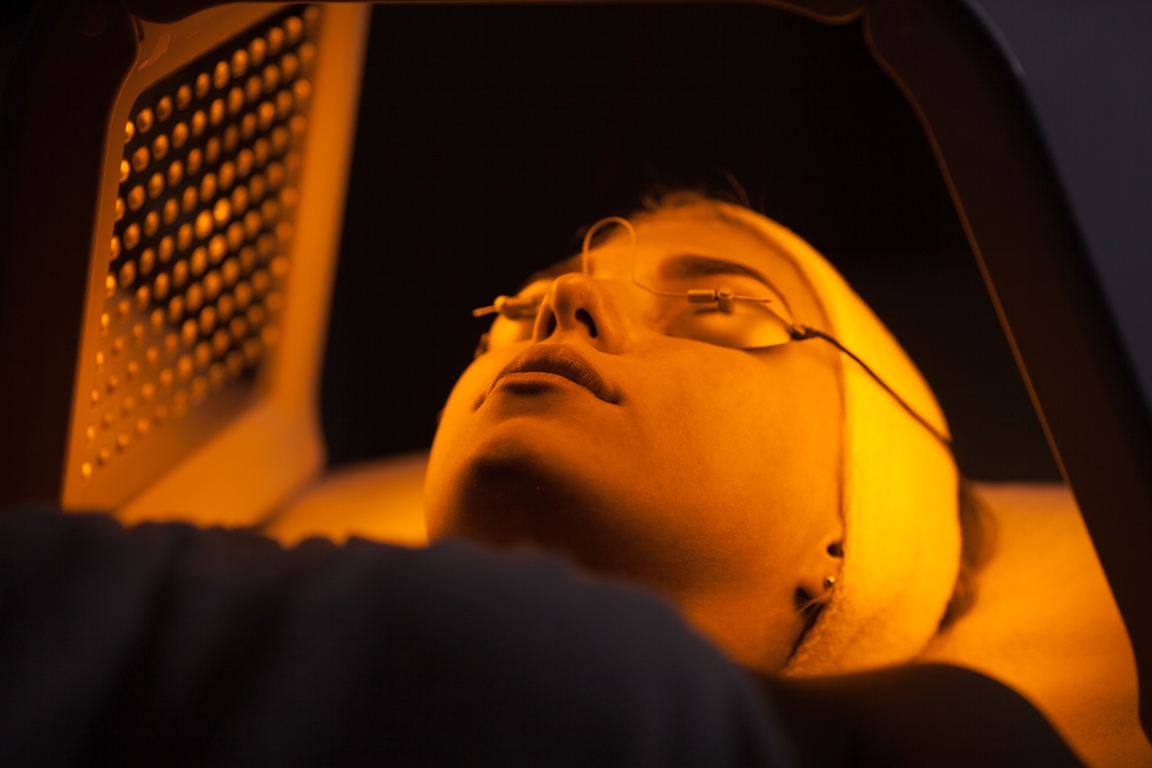For acne, wounds, sun damage, and other skin disorders LED light therapy is a popular non-invasive treatment. LED light treatment can be done beauty clinic or at home with a device. The therapy uses different wavelengths of light to stimulate the skin’s natural healing processes and help it mend. To experience its benefits, you’ll need to go through several sessions.
We’ll look at how LED light therapy works and will also discuss the potential adverse effects.
What Is Led Light Therapy?
LED light therapy is a non-ultraviolet light-based skin treatment. Instead, skin-safe, low-level light in various wavelengths and colours is used. These are some of them:
- Amber
- Blue
- Red
- Green
Different LED lights are sometimes coupled with 5-aminolevulinic acid, a photosensitive medication. This drug is administered to the skin and combined with LED light therapy. While this may make your skin more sensitive to light, it aids the treatment’s effectiveness (also known as photodynamic therapy).
While most LED light therapy is done in a dermatologist’s clinic, various LED light facial gadgets may be used at home. These are some of them:
- Light facial masks
- Light wands for targeted spot treatment
- Ultrasonic devices
- Mesotherapy electroporation devices
- Professional LED light machines
These lights are used to treat a variety of skin problems. Light therapy administered by a physician is a potential skin treatment, but at-home devices need additional research. It’s unclear whether home light masks, for example, work or have long-term impacts.
This is something you should try if you have drooping, wrinkled skin, acne, or irritation. But how can a device that produces intense lights assist you in achieving a clearer, more radiant complexion?
What Does Light Therapy Do?
LED Light Therapy is excellent for soothing any areas of inflammation in the face and whitening the complexion. LED lights works by penetrating into the skin at different levels and induce various reactions in the skin. Such reactions may include battling acne-causing germs, plumping the skin, and reducing wrinkles, when used consistently over time.
Although you’ll notice a difference after the first session, a course of treatments provides corrective and long-lasting outcomes. Light therapy is also quite relaxing, so you’ll feel rejuvenated when you leave.
What Types Of Light Are There And What Do They Do?
Blue Light- It is a potent antibacterial property that treats acne without skin irritation, lowers oil production, prevents future breakouts, and provides a UV-free option for eczema and psoriasis treatment.
Red Light- This is a medically authorised treatment for rosacea that promotes natural hydration levels, reduces redness and inflammation, decreases the appearance of pores, regulates oil production, improves circulation, and speeds up skin restoration.
Near Infra-red Light- This wavelength profoundly penetrates the skin, increasing cell permeability and absorption, smoothing lines and wrinkles, improving elasticity, reducing pain and inflammation, speeding wound healing, and healing cystic acne.
If you’re thinking about getting an LED skin gadget, consider the following factors.
Efficacy– There haven’t been any significant trials to show that such lights are much more beneficial than current treatments.
Cost– Treatments can be pretty expensive per session. It also depends on the beauty clinic from where you are getting it done. This is a lot of money to spend on something that might or might not work.
Variability– There is a chance that the quality of these devices will vary. Because the FDA examines devices for safety rather than efficacy, quality may vary.
Uses And Benefits
LED light therapy can help you to treat a lot of skin problems or skin inflammations, including:
- acne
- dermatitis
- dull skin
- eczema
- psoriasis
- rosacea
- scarring
- signs of aging, wrinkles, age spots
- sun damage
- wound healing
The safety record of LED light treatment is one of its key advantages. LED light therapy has a great safety profile, according to the study.
It does not include UV rays, which can cause skin damage. As a result, LED therapy can be used on a regular basis.
LED light therapy does not produce burns, unlike chemical peels or laser therapy. The procedure is also suitable for people of all skin kinds and hues.
Safety And Side Effects
LED light treatment is generally considered to be safe. The treatment is non-invasive and does not result in any discomfort or burning. Experts warn, however, that the long-term implications of these gadgets are unknown.
Short-term adverse effects are pretty uncommon. When they do happen, they may involve the following:
- inflammation
- rashes
- skin redness
- tenderness
If you use acne medications like isotretinoin (Accutane) or topical therapies that make you sensitive to sunlight, you shouldn’t use LED therapy.
Before using LED light treatment, those with skin issues should consult a dermatologist.
How To Use Light Therapy
LED light treatment can be done at a beauty clinic or home with a portable device. The dermatologist may urge the patient to lie down under LED lights or use an LED wand on the skin during professional treatment.
Each session lasts about 20 minutes, and you may need up to ten of them. Following that, a person may need to return for maintenance sessions regularly. Because no appointments are required, at-home LED devices may be handier. They may, however, be ineffective compared to professional therapies.
Aesthetics Clinic – It is critical to follow the manufacturer’s recommendations when utilising an at-home gadget. These devices are usually in the shape of a mask applied to the face for many minutes or a wand used to apply to the skin. Anybody area, including the face, hands, neck, and chest, can benefit from LED light therapy. Not much recovery time is needed after the light treatment.
